Showing Spotlights 1049 - 1056 of 2783 in category All (newest first):
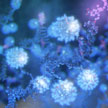 Typically, in clinical formulations of Magnetic Resonance Imaging (MRI) contrast agents, gram quantities of Gd(III) are needed to achieve sufficiently high contrast for examination. That's why the research imaging community is interested in developing new formulations of contrast agents able to bridge the gap between high contrast imaging of contrast agents dosed at low concentrations.
In new work, researchers report a new class of gold nanoconjugates that exhibit exceptionally high relaxivities at both low and high field strengths.
Typically, in clinical formulations of Magnetic Resonance Imaging (MRI) contrast agents, gram quantities of Gd(III) are needed to achieve sufficiently high contrast for examination. That's why the research imaging community is interested in developing new formulations of contrast agents able to bridge the gap between high contrast imaging of contrast agents dosed at low concentrations.
In new work, researchers report a new class of gold nanoconjugates that exhibit exceptionally high relaxivities at both low and high field strengths.
Mar 23rd, 2015
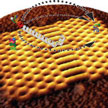 In new work, researchers have utilized diffusion as an effective transport mechanism for DNA nanotechnology. These findings contribute a new aspect to be considered for the design of future DNA motors, molecular machines, and nanorobots as they provide a simple way to transport molecules over distances of potentially several 100 nm; which is much faster than when using conventional DNA walkers or motors, which make many small and slow steps.
In new work, researchers have utilized diffusion as an effective transport mechanism for DNA nanotechnology. These findings contribute a new aspect to be considered for the design of future DNA motors, molecular machines, and nanorobots as they provide a simple way to transport molecules over distances of potentially several 100 nm; which is much faster than when using conventional DNA walkers or motors, which make many small and slow steps.
Mar 19th, 2015
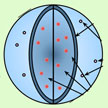 Trying to develop chemical free disinfection techniques, researchers are currently exploring the effectiveness of a nanotechnology based intervention method for the inactivation of foodborne and spoilage microorganisms on fresh produce and on food production surfaces. This method utilizes Engineered Water Nanostructures (EWNS) generated by electrospraying of water. These EWNS are 25 nm in diameter; remain airborne in indoor conditions for hours; contain Reactive Oxygen Species (ROS); have very strong surface charge (on average 10 electrons per structure) and have the ability to interact and inactivate pathogens by destroying their membrane.
Trying to develop chemical free disinfection techniques, researchers are currently exploring the effectiveness of a nanotechnology based intervention method for the inactivation of foodborne and spoilage microorganisms on fresh produce and on food production surfaces. This method utilizes Engineered Water Nanostructures (EWNS) generated by electrospraying of water. These EWNS are 25 nm in diameter; remain airborne in indoor conditions for hours; contain Reactive Oxygen Species (ROS); have very strong surface charge (on average 10 electrons per structure) and have the ability to interact and inactivate pathogens by destroying their membrane.
Mar 16th, 2015
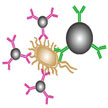 Researchers have developed a magnetic bead based sensor that combines magnetic separation (MS) and magnetic relaxation switch (MRS) for one-step detection of bacteria and viruses with high sensitivity and reproducibility. Compared to conventional assays for detection of bacteria and viruses, this novel MS-MRS assay is easy to operate without laborious pre-treatment, purification and can be adaptable to point-of-care tests easily.
Researchers have developed a magnetic bead based sensor that combines magnetic separation (MS) and magnetic relaxation switch (MRS) for one-step detection of bacteria and viruses with high sensitivity and reproducibility. Compared to conventional assays for detection of bacteria and viruses, this novel MS-MRS assay is easy to operate without laborious pre-treatment, purification and can be adaptable to point-of-care tests easily.
Mar 13th, 2015
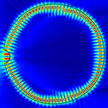 Molybdenum disulfide's (MoS2) semiconducting ability, strong light-matter interaction and similarity to the carbon-based graphene makes it of interest to scientists as a viable alternative to graphene in the manufacture of electronics, particularly photoelectronics. In particular, MoS2 has excellent optical properties when deposited as a single, atom-thick layer - unlike graphene, it emits light when excited; albeit relatively poorly. In order to realize the potential of atomically thin MoS2 as a nanoscale active material in a light source, a considerable enhancement of its emission efficiency is necessary.
Molybdenum disulfide's (MoS2) semiconducting ability, strong light-matter interaction and similarity to the carbon-based graphene makes it of interest to scientists as a viable alternative to graphene in the manufacture of electronics, particularly photoelectronics. In particular, MoS2 has excellent optical properties when deposited as a single, atom-thick layer - unlike graphene, it emits light when excited; albeit relatively poorly. In order to realize the potential of atomically thin MoS2 as a nanoscale active material in a light source, a considerable enhancement of its emission efficiency is necessary.
Mar 12th, 2015
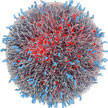 Historically, the approval of Doxil as the very first nanotherapeutic product in 1995 is generally regarded as the dawn of nanomedicine for human use. Although numerous products classified as nanomedicine products have indeed appeared over the past decade, such products have not exactly revolutionized treatment paradigms as envisaged earlier. In particular no molecular machine or nanorobot has yet entered clinical trials, although research in these areas is picking up pace.
Historically, the approval of Doxil as the very first nanotherapeutic product in 1995 is generally regarded as the dawn of nanomedicine for human use. Although numerous products classified as nanomedicine products have indeed appeared over the past decade, such products have not exactly revolutionized treatment paradigms as envisaged earlier. In particular no molecular machine or nanorobot has yet entered clinical trials, although research in these areas is picking up pace.
Mar 10th, 2015
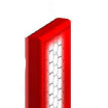 Heat energy can be converted into electricity with very high efficiency through a temperature-induced electron flow process known as thermionic emission. Thermionic energy converters have been used with different heat sources, all of them requiring operation at high temperatures above 1500 K. A new study indicates that heat temperature can be lowered by an order of magnitude if using graphene as hot cathode. The findings indicate that a graphene-based cathode thermionic converter operating at 900 K could reach an efficiency of 45%.
Heat energy can be converted into electricity with very high efficiency through a temperature-induced electron flow process known as thermionic emission. Thermionic energy converters have been used with different heat sources, all of them requiring operation at high temperatures above 1500 K. A new study indicates that heat temperature can be lowered by an order of magnitude if using graphene as hot cathode. The findings indicate that a graphene-based cathode thermionic converter operating at 900 K could reach an efficiency of 45%.
Mar 5th, 2015
 Supercapacitors offer an alternative source of energy to replace rechargeable batteries for various applications, such as mobile electronics and electric vehicles. Among the various types of supercapacitors, carbon nanotube based devices have shown an order of magnitude higher performance in terms of energy and power densities. The bottleneck for transferring this technology to the marketplace, however, is the lack of efficient and scalable nanomanufacturing methods. Researchers have now developed a new scalable method to to directly spraycoat CNT-based supercapacitor electrodes.
Supercapacitors offer an alternative source of energy to replace rechargeable batteries for various applications, such as mobile electronics and electric vehicles. Among the various types of supercapacitors, carbon nanotube based devices have shown an order of magnitude higher performance in terms of energy and power densities. The bottleneck for transferring this technology to the marketplace, however, is the lack of efficient and scalable nanomanufacturing methods. Researchers have now developed a new scalable method to to directly spraycoat CNT-based supercapacitor electrodes.
Mar 3rd, 2015
 Typically, in clinical formulations of Magnetic Resonance Imaging (MRI) contrast agents, gram quantities of Gd(III) are needed to achieve sufficiently high contrast for examination. That's why the research imaging community is interested in developing new formulations of contrast agents able to bridge the gap between high contrast imaging of contrast agents dosed at low concentrations.
In new work, researchers report a new class of gold nanoconjugates that exhibit exceptionally high relaxivities at both low and high field strengths.
Typically, in clinical formulations of Magnetic Resonance Imaging (MRI) contrast agents, gram quantities of Gd(III) are needed to achieve sufficiently high contrast for examination. That's why the research imaging community is interested in developing new formulations of contrast agents able to bridge the gap between high contrast imaging of contrast agents dosed at low concentrations.
In new work, researchers report a new class of gold nanoconjugates that exhibit exceptionally high relaxivities at both low and high field strengths.
 Subscribe to our Nanotechnology Spotlight feed
Subscribe to our Nanotechnology Spotlight feed





